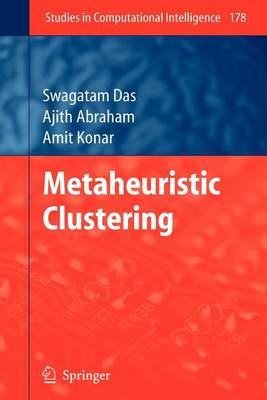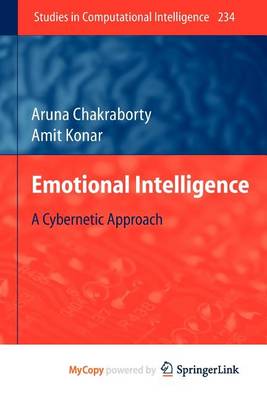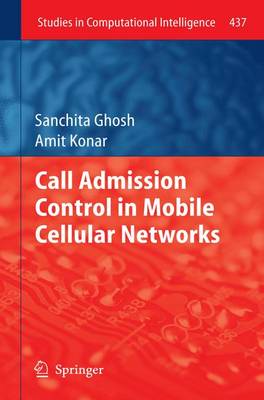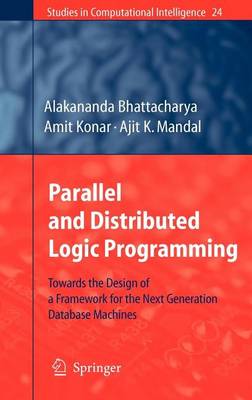Studies in Computational Intelligence
5 primary works • 6 total works
Book 24
Parallel and Distributed Logic Programming
by Alakananda Bhattacharya, Amit Konar, and Ajit K Mandal
This book introduces the parallel and distributed approach to logic programming, examining existing models of distributed logic programming, and proposing an alternative framework for distributed logic programming using extended Petri nets. The hardwired realization of the Petri net based framework is presented in detail, and principles of mapping of a logic program on to the proposed framework are outlined. Finally, the book explores the scope of Petri net models in designing next-generation deductive database machines.
Book 178
Cluster analysis means the organization of an unlabeled collection of objects or patterns into separate groups based on their similarity. The task of computerized data clustering has been approached from diverse domains of knowledge like graph theory, multivariate analysis, neural networks, fuzzy set theory, and so on. Clustering is often described as an unsupervised learning method but most of the traditional algorithms require a prior specification of the number of clusters in the data for guiding the partitioning process, thus making it not completely unsupervised. Modern data mining tools that predict future trends and behaviors for allowing businesses to make proactive and knowledge-driven decisions, demand fast and fully automatic clustering of very large datasets with minimal or no user intervention.
In this volume, we formulate clustering as an optimization problem, where the best partitioning of a given dataset is achieved by minimizing/maximizing one (single-objective clustering) or more (multi-objective clustering) objective functions. Using several real world applications, we illustrate the performance of several metaheuristics, particularly the Differential Evolution algorithm when applied to both single and multi-objective clustering problems, where the number of clusters is not known beforehand and must be determined on the run. This volume comprises of 7 chapters including an introductory chapter giving the fundamental definitions and the last Chapter provides some important research challenges.
Academics, scientists as well as engineers engaged in research, development and application of optimization techniques and data mining will find the comprehensive coverage of this book invaluable.
Book 234
Book 437
Call Admission Control in Mobile Cellular Networks
by Sanchita Ghosh and Amit Konar
Call Admission Control (CAC) and Dynamic Channel Assignments (DCA) are important decision-making problems in mobile cellular communication systems. Current research in mobile communication considers them as two independent problems, although the former greatly depends on the resulting free channels obtained as the outcome of the latter. This book provides a solution to the CAC problem, considering DCA as an integral part of decision-making for call admission. Further, current technical resources ignore movement issues of mobile stations and fluctuation in network load (incoming calls) in the control strategy used for call admission. In addition, the present techniques on call admission offers solution globally for the entire network, instead of considering the cells independently.
CAC here has been formulated by two alternative approaches. The first approach aimed at handling the uncertainty in the CAC problem by employing fuzzy comparators. The second approach is concerned with formulation of CAC as an optimization problem to minimize call drop, satisfying a set of constraints on feasibility and availability of channels, hotness of cells, and velocity and angular displacement of mobile stations. Evolutionary techniques, including Genetic Algorithm and Biogeography Based Optimization, have been employed to solve the optimization problems. The proposed approaches outperform traditional methods with respect to grade and quality of services.Book 724
This book presents a thorough analysis of gestural data extracted from raw images and/or range data with an aim to recognize the gestures conveyed by the data. It covers image morphological analysis, type-2 fuzzy logic, neural networks and evolutionary computation for classification of gestural data. The application areas include the recognition of primitive postures in ballet/classical Indian dances, detection of pathological disorders from gestural data of elderly people, controlling motion of cars in gesture-driven gaming and gesture-commanded robot control for people with neuro-motor disability.
The book is unique in terms of its content, originality and lucid writing style. Primarily intended for graduate students and researchers in the field of electrical/computer engineering, the book will prove equally useful to computer hobbyists and professionals engaged in building firmware for human-computer interfaces. A prerequisite of high school level mathematics is sufficient to understand most of the chapters in the book. A basic background in image processing, although not mandatory, would be an added advantage for certain sections.





